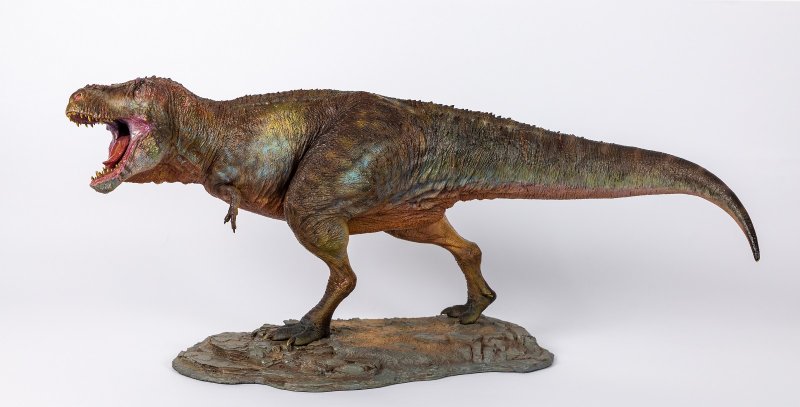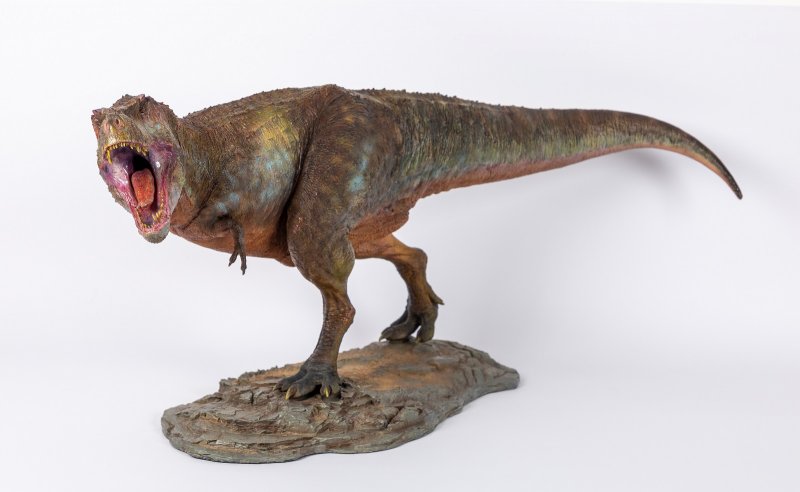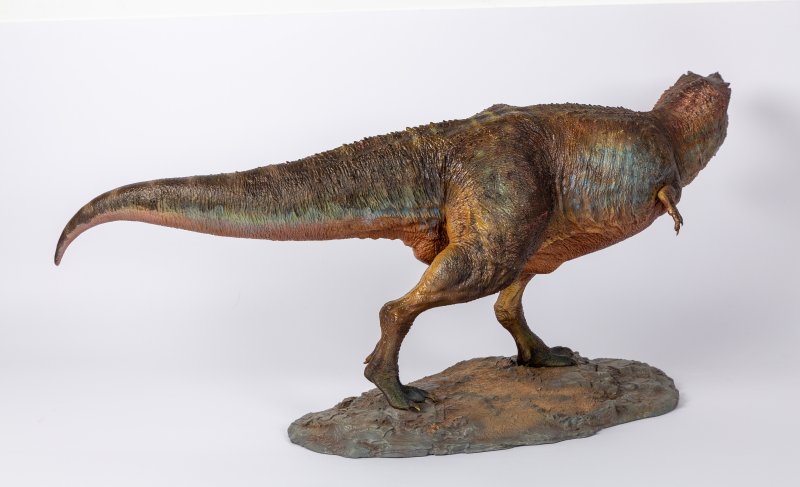19 May 2022
New Arrival - a paleontological reconstruction of Tyrannosaurus Rex Scotty (RSM P2523.8) at 1:18 scale
The
collection of casts and replicas of the museum has been replenished with a
paleoreconstruction of tyrannosaurus on scale of 1:18 of amazing quality and
accuracy.
The 3D
reconstruction was made by the remarkable paleoreconstructor Vladislav Andreevich Konstantinov. 3D printing and hand painting were done in China by
Showanna Studio. Vladislav Andreevich collaborates with museums around the
world, has worked on various popular science programs for Discovery and
National Geographic channels and has made 3D models for cinema and television.
Tyrannosaurus
Scotty (RSM P2523.8) was discovered in the Canadian province Saskatchewan 28
years ago, in 1991. According to paleontologists from the University of Alberta
(Canada), this skeleton belonged to the largest species known to science today.
A total of
55 models of Tyrannosaurus Scotty were made. And only 5 of them in the color
range in which our specimen is painted.
The museum
expresses deep gratitude to Vladislav Konstantinov for adding an interesting
exhibit to our collection.
Tyrannosaurus
is a genus of carnivorous theropod dinosaurs from the tyrannosaurid family,
including the single species Tyrannosaurus Rex. It lived in western North
America. Tyrannosaur fossils are found in various geological formations dating
back to the Maastrichtian age of the Cretaceous period, about 70-66 million
years ago. It was one of the last non-avian dinosaurs existing before the
cataclysm that ended the Mesozoic era, the Cretaceous-Paleogene extinction
event.
Like other
members of its family, Tyrannosaurus had a massive skull that was balanced by a
long, heavy and stiff tail. Compared to the large and powerful hind limbs of
this lizard, its front paws were quite small and had two clawed fingers. It is
the largest species of its family and one of the largest representatives of
theropods. As the largest carnivore in its ecosystem, T. Rex was most likely an
opportunist predator which means it could both hunt and feed on carrion.
In total,
more than 50 tyrannosaur skeletons have been identified, some of which are
almost completely preserved. The abundance of material allowed to conduct
in-depth studies of many aspects of the biology of this animal, including life
history and even biomechanics. Features of nutrition, physiology and speed of
movement are only few of the subjects of scientific debate. The taxonomy of
this genus is also the subject of debate - for example, some experts include
only one species (T. Rex) in this genus and some include Tarbosaurus, known
from the Cretaceous deposits of Mongolia, in this genus. Some genera of North
American tyrannosaurids are synonymous with tyrannosaurus sometimes.
Tyrannosaurus Rex gained great prominence in popular culture as a fierce
predator after the success of the movie “Jurassic Park”.




Комментарии могут оставлять только зарегистрированные пользователи











